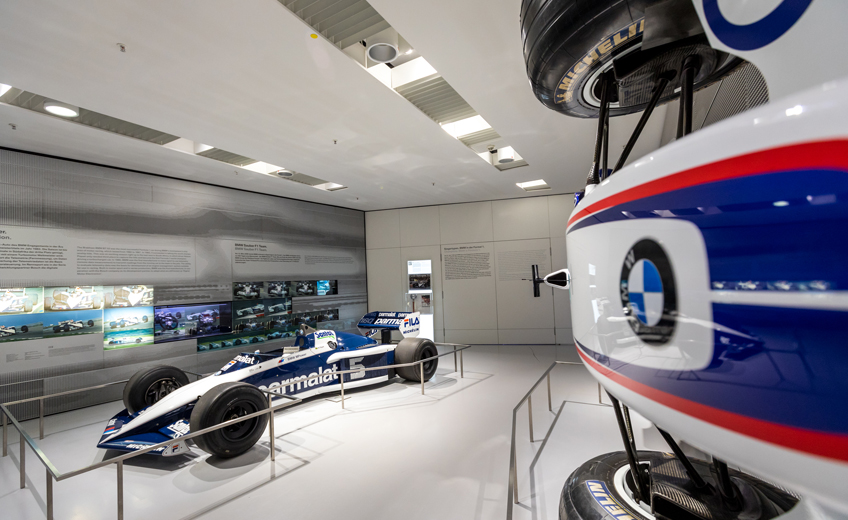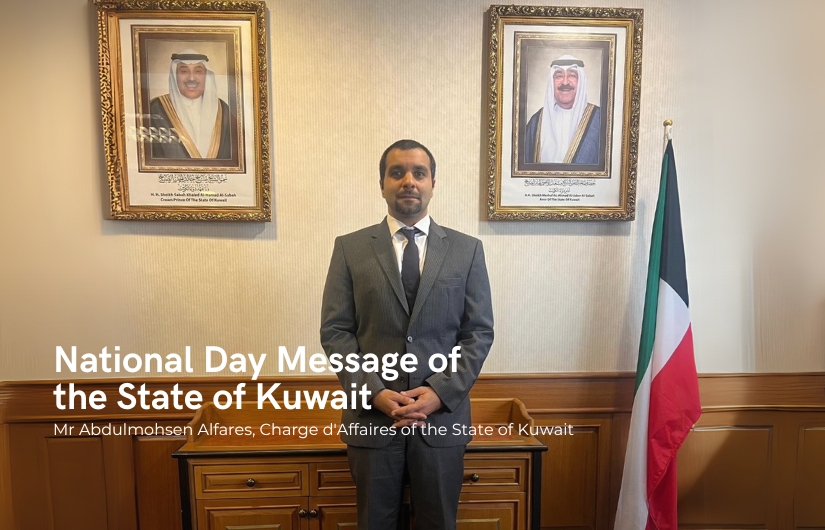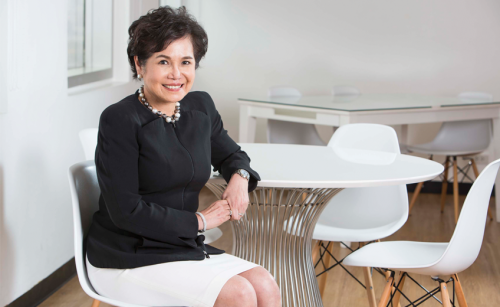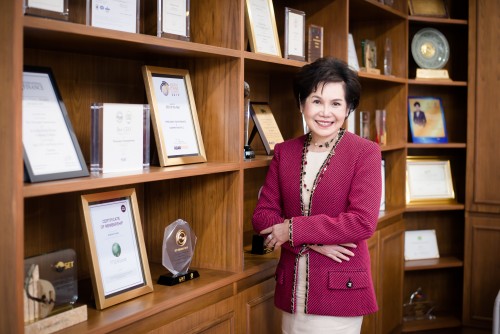Next to Munich’s historic Olympiapark - where soldiers once marched and the world’s first Zeppelin magnificently touched down - is a glassand- steel structure that spirals skywards like a discus, or perhaps even a spaceship. Set against a backdrop of factory sheds and office towers, it looks robustly futuristic against the German city’s post-war industrial landscape. Despite the contrast, it fits right into the distinctly European scene. BMW Welt (BMW World) and BMW Museum are as much symbols of the Bavarian capital as Oktoberfest, big pretzels and wheat beer.
Arriving at the sprawling compound, home to BMW’s driver pick-up centre and impressive showrooms displaying all the latest models and gadgetry, I felt like a child again. My family’s first car was from the world-renowned German automaker. We owned a dealership selling BMW parts in Thailand. Some of my best memories of growing up were riding that BMW E21 on family outings to exciting adventures. Despite being on another continent and in a different era, the visit provided a nostalgic thrill.
I always knew that if I ever wanted to buy a car, it would have to be a BMW. This is partly sentimental instinct, to be sure, but more importantly for me it was always about the aesthetic. Elegant luxury design wrapped in steel practicality. And when it comes to the car maker’s smart technology and present-day innovations, it’s no wonder these vehicles are a no-brainer for many consumers around the world.
Munich is a city of high culture, from its fashionable locals to plentiful art galleries and tech enterprises. BMW belongs in the midst of it all. Walking down the street, you’ll see the company’s blue-and-white chequered logo (the same shades as the Bavarian flag) on more vehicles than any other. Bavarians are proud of their unique traditions, and BMW is not just an employer of thousands of state citizens but also inspires deep-running loyalty, which my own memories of the brand can relate to.
The multi-use exhibition centre looks much the same as it did on October 17, 2007, when it was first unveiled to the public. It’s a solid structure built with precision, but like BMW vehicles quite sleek and in no way imposing or cumbersome. Its signature feature is a glass double-cone, reminiscent of a tornado circling from a storm cloud. Inside the building, steel beams and panels are welded together, resembling the steel skeletons of vehicles.
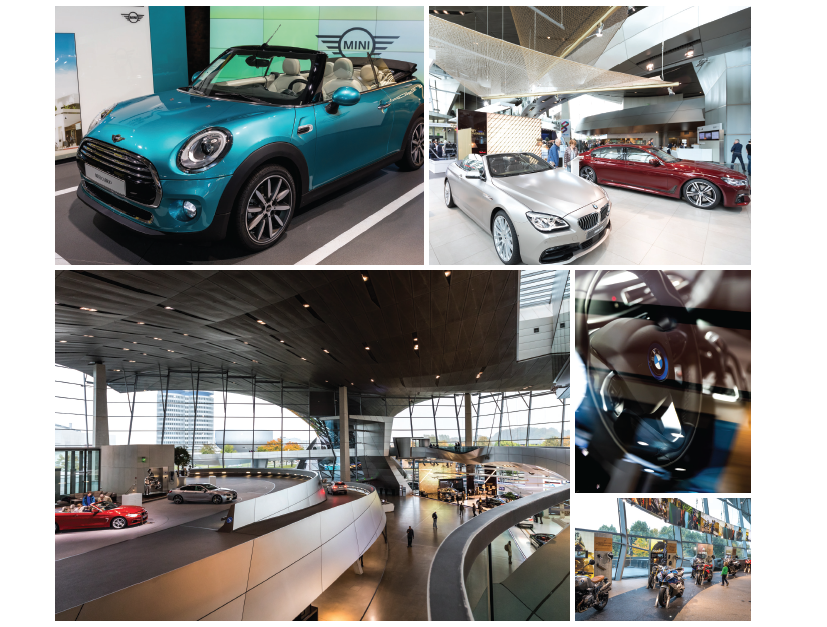
The building was designed by acclaimed architectural firms Sauerbruch Hutton and Coop Himmelb(l)au, which won the bid in an international competition. One of its most impressive accomplishments in the final product, besides creating what critics have called a wonder of deconstructionism, is the 800kW solar plant on the building’s roof. According to head architect Wolfgang Prix, the roof is large enough to cover Venice’s principal public square, Piazza San Marco.
“At times its steel underbelly, animated with slashes of light, can evoke the fabric canopies that shade traditional bazaars in Middle Eastern cities,” Prix stated at the time. BMW Welt welcomes hundreds of thousands of visitors a year, and with so much staff and so many displays to organize, it’s obvious the facility is a well-oiled machine. It presents all the brands and facets of the BMW Group from BMW, BMW i, BMW M and Mini.
While visiting BMW Welt itself is free, museum entry is 10 euros (380 baht) and allows guests to tour permanent exhibitions and the current temporary exhibition “100 Years of Masterpieces”. On March 7, 2016, BMW celebrated its centennial and the display is a dive into the evolution of car design and technology. The museum, located opposite BMW Welt, follows an intimate chronology, from the early days of the automaker to today’s technological sophistication.
While everyone knows the name BMW and perhaps also the white-and-blue chequered logo, not many can tell you the story of how it started. It’s an extremely interesting tale full of twists and turns. The luxury automaker had many struggles but also moments of fortune along the way.
Established during World War I as a manufacturer of aircraft engines, the company was forced to change production in 1918 according to terms dictated to Germany in the Treaty of Versailles. So BMW, then known as Rapp Motorenwerke, began making motorcycles. As the restrictions of the treaty began to be lifted in 1923, automobile production followed a few years later.
BMW reinvented itself during that time and arguably again in the midst of the oil crisis of the early 1970s. It would ultimately break into mass consciousness as a maker of sporty, posh automobiles in the 1970s and ’80s. BMW, short for Bayerische Motoren Werke, or Bavarian Motor Works, is also owner of the British brand Rolls-Royce and still runs that same motorcycle business, now called BMW Motorrad, that it started after World War I.
You can see such vehicles on display, as well as a host of other beautiful makes from throughout the decades. The 3 Series, one of the earliest examples of the modern vehicles of today, has an entire section of the permanent exhibition dedicated to it. In the 1930s, it broke the mould with 50-horsepower and six-cylinder in-line engines. Now in a sixth generation, it remains BMW’s top-seller.
Personally, I really enjoyed seeing the BMW 1500, a four-door mid-range saloon displayed in “100 Masterpieces”. This vehicle launched the “new class” of cars and was pivotal for the company – the line’s popularity ensured solvency after a financial crisis in the company in the 1950s. It’s a sports sedan with a great vintage look and big classy grill.
“100 Masterpieces” will be on show until September 30, 2017. If you are a BMW fan like me, don’t miss it. And beware – one day of wandering around the compound might not be enough.
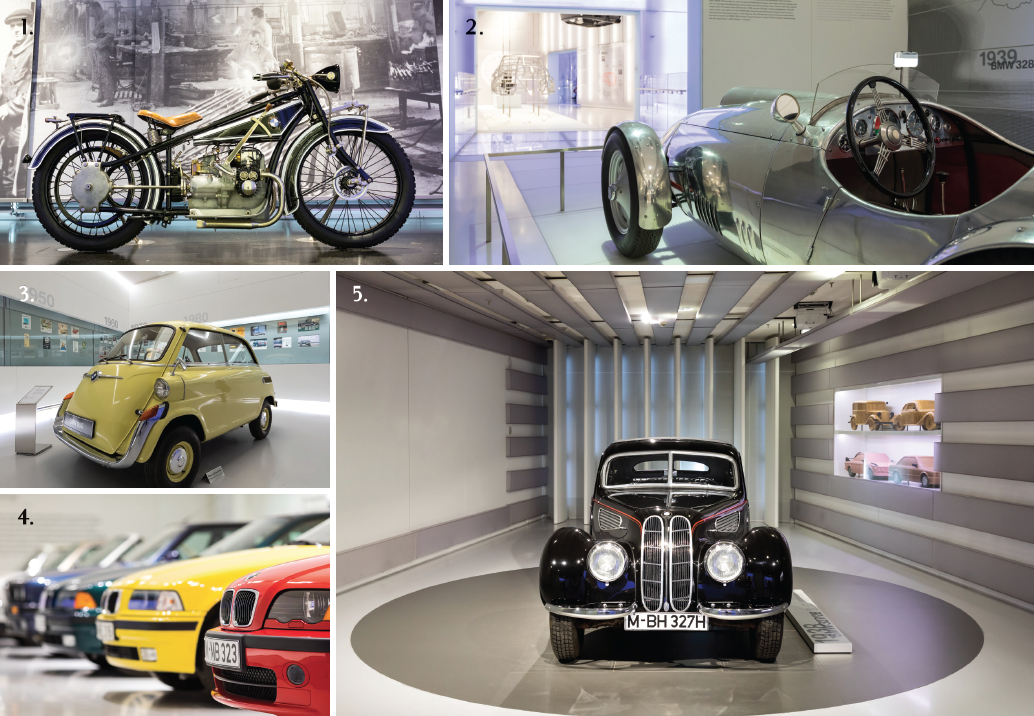
Here are some highlights
- While the motorized two-wheelers available on the market could barely hide their kinship with the bicycle, head designer Max Friz developed a completely distinctive vehicle. A motorcycle that offered a harmonious combination of exceptional, high-quality details, the R 32 was launched at the Berlin Motor Show in 1923. Even this very first BMW was fitted with a boxer engine with cylinders arranged transversely to the direction of travel and a shaft that transmitted power to the rear wheels. The engine had an output of 8.5hp, but despite the fact that roads were generally unsurfaced at the time, it still reached a top speed of 95km/h. This quality came with a price tag, however: at 2,200 Reichsmark the R 32 was the most expensive motorcycle in Germany.
- A two-seater sports racing car built by Alexander von Falkenhausen in Munich with intertype aluminium body by Willi Huber at the island Frauenchiemsee.
- The BMW 600, popularly known as the ‘Large Isetta’, represents the link between the Isetta and the BMW 700. In order to have a product to sell against the flood of conventionally built small cars around the mid-1950s, BMW built the 600 with equal track at front and rear, a door at the front and a right-hand side door. Despite its high quality, very good handling and spacious interior, the unusual vehicle was judged a misfit by motorists looking for a more conventional-looking car.
- Since 1975 the BMW 3 Series models have been the best-selling cars for BMW. Like every BMW, they unite values such as dynamic performance and quality in a form that even exceeds the marque’s high expectations.
- The rare BMW 327/28 Coupe was the most elegant car to leave the Eisenach factory before WWII. The styling clearly reveals the influence of aerodynamic research. On Germany’s new ‘autobahn’ motorways, it was one of the fastest cars of its day.


